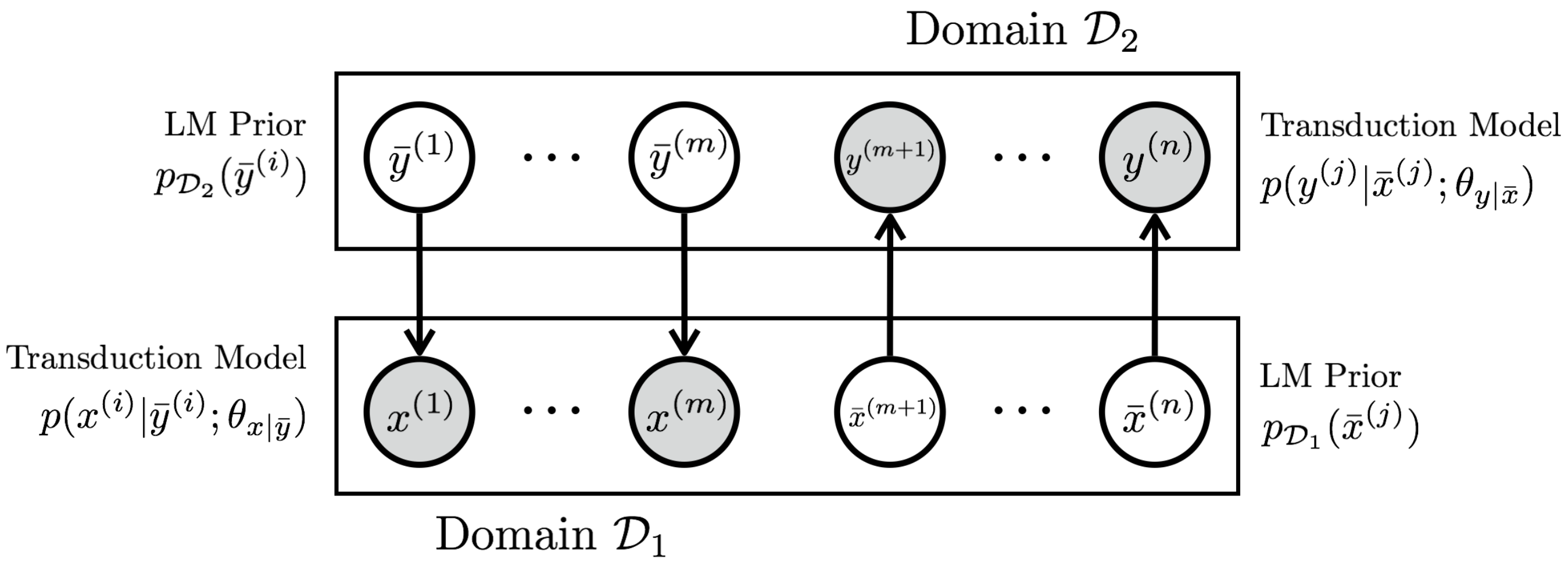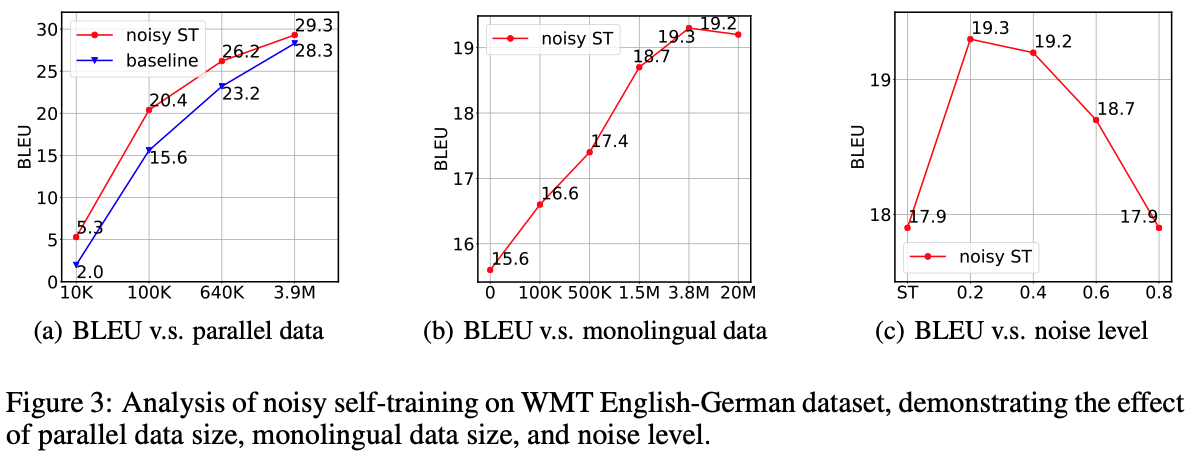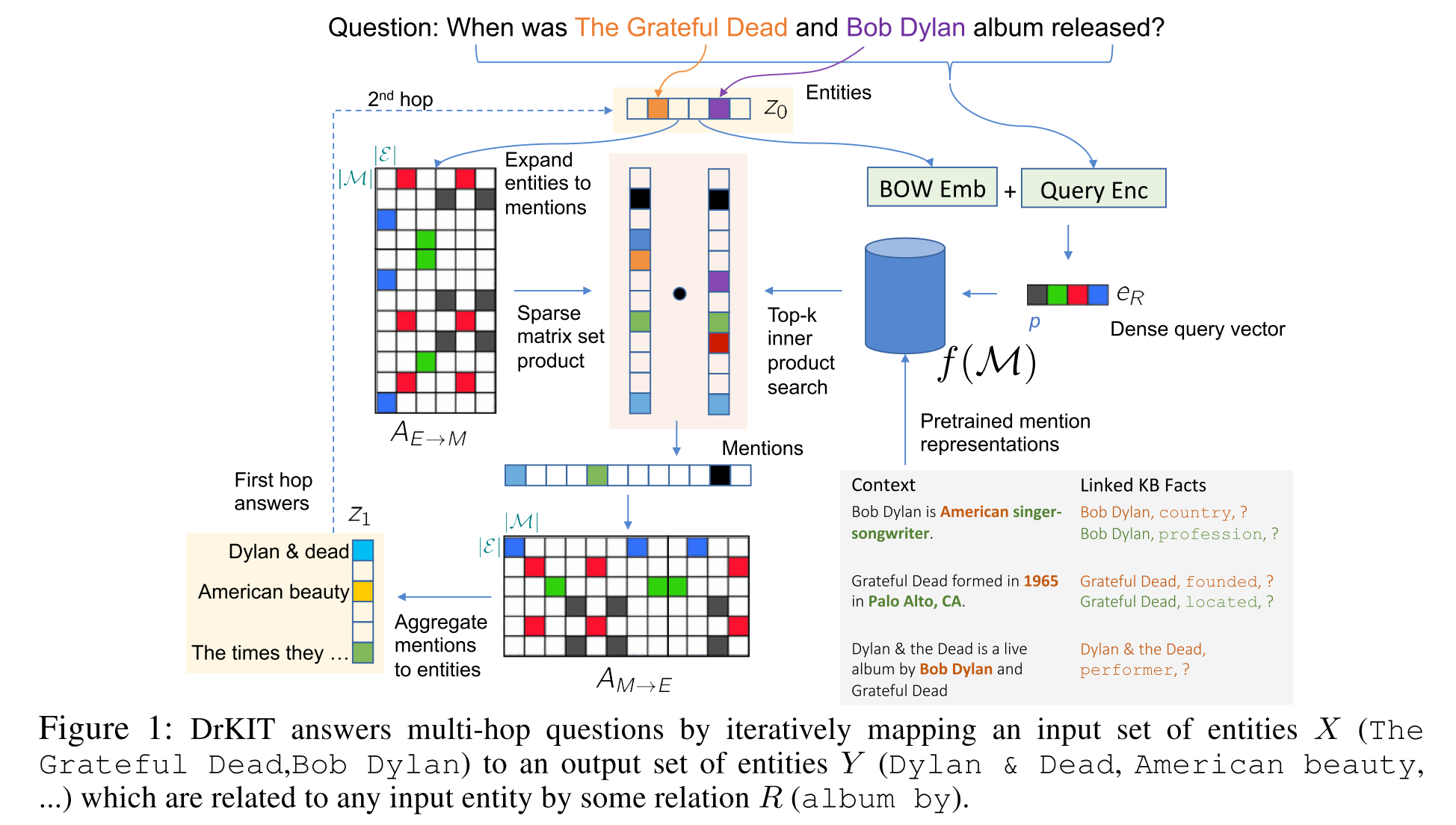NeuLab Presentations at ICLR 2020
NeuLab will be presenting at ICLR 2020! Come visit our posters/presentations if you’re online for the conferences.
Understanding Knowledge Distillation in Non-autoregressive Machine Translation
- Authors: Chunting Zhou, Jiatao Gu, Graham Neubig
- Time: Monday, April 27. 04:00–06:00, 08:00–10:00, participation link

Non-autoregressive machine translation (NAT) systems predict a sequence of output tokens in parallel, achieving substantial improvements in generation speed compared to autoregressive models. Existing NAT models usually rely on the technique of knowledge distillation, which creates the training data from a pretrained autoregressive model for better performance. Knowledge distillation is empirically useful, leading to large gains in accuracy for NAT models, but the reason for this success has, as of yet, been unclear. In this paper, we first design systematic experiments to investigate why knowledge distillation is crucial to NAT training. We find that knowledge distillation can reduce the complexity of data sets and help NAT to model the variations in the output data. Furthermore, a strong correlation is observed between the capacity of an NAT model and the optimal complexity of the distilled data for the best translation quality. Based on these findings, we further propose several approaches that can alter the complexity of data sets to improve the performance of NAT models. We achieve the state-of-the-art performance for the NAT-based models, and close the gap with the autoregressive baseline on WMT14 En-De benchmark. Code is released at https://github.com/pytorch/fairseq/tree/master/examples/nonautoregressive_translation.
Cross-lingual Alignment vs Joint Training: A Comparative Study and A Simple Unified Framework
- Authors: Zirui Wang, Jiateng Xie, Ruochen Xu, Yiming Yang, Graham Neubig, Jaime Carbonell
- Time: Monday, April 27. 13:00–15:00, 16:00–18:00, participation link

Learning multilingual representations of text has proven a successful method for many cross-lingual transfer learning tasks. There are two main paradigms for learning such representations: (1) alignment, which maps different independently trained monolingual representations into a shared space, and (2) joint training, which directly learns unified multilingual representations using monolingual and cross-lingual objectives jointly. In this paper, we first conduct direct comparisons of representations learned using both of these methods across diverse cross-lingual tasks. Our empirical results reveal a set of pros and cons for both methods, and show that the relative performance of alignment versus joint training is task-dependent. Stemming from this analysis, we propose a simple and novel framework that combines these two previously mutually-exclusive approaches. Extensive experiments demonstrate that our proposed framework alleviates limitations of both approaches, and outperforms existing methods on the MUSE bilingual lexicon induction (BLI) benchmark. We further show that this framework can generalize to contextualized representations such as Multilingual BERT, and produces state-of-the-art results on the CoNLL cross-lingual NER benchmark.
A Probabilistic Formulation of Unsupervised Text Style Transfer
- Authors: Junxian He, Cindy Xinyi Wang, Graham Neubig, Taylor Berg-Kirkpatrick
- Time: Tuesday, April 28. 01:00–03:00, 08:00–10:00, participation link

We present a deep generative model for unsupervised text style transfer that unifies previously proposed non-generative techniques. Our probabilistic approach models non-parallel data from two domains as a partially observed parallel corpus. By hypothesizing a parallel latent sequence that generates each observed sequence, our model learns to transform sequences from one domain to another in a completely unsupervised fashion. In contrast with traditional generative sequence models (e.g. the HMM), our model makes few assumptions about the data it generates: it uses a recurrent language model as a prior and an encoder-decoder as a transduction distribution. While computation of marginal data likelihood is intractable in this model class, we show that amortized variational inference admits a practical surrogate. Further, by drawing connections between our variational objective and other recent unsupervised style transfer and machine translation techniques, we show how our probabilistic view can unify some known non-generative objectives such as backtranslation and adversarial loss. Finally, we demonstrate the effectiveness of our method on a wide range of unsupervised style transfer tasks, including sentiment transfer, formality transfer, word decipherment, author imitation, and related language translation. Across all style transfer tasks, our approach yields substantial gains over state-of-the-art non-generative baselines, including the state-of-the-art unsupervised machine translation techniques that our approach generalizes. Further, we conduct experiments on a standard unsupervised machine translation task and find that our unified approach matches the current state-of-the-art.
Revisiting Self-Training for Neural Sequence Generation
- Authors: Junxian He, Jiatao Gu, Jiajun Shens, Marc’Aurelio Ranzato
- Time: Thursday, April 30. 01:00–03:00, 08:00–10:00, participation link

Self-training is one of the earliest and simplest semi-supervised methods. The key idea is to augment the original labeled dataset with unlabeled data paired with the model’s prediction (i.e. the pseudo-parallel data). While self-training has been extensively studied on classification problems, in complex sequence generation tasks (e.g. machine translation) it is still unclear how self-training works due to the compositionality of the target space. In this work, we first empirically show that self-training is able to decently improve the supervised baseline on neural sequence generation tasks. Through careful examination of the performance gains, we find that the perturbation on the hidden states (i.e. dropout) is critical for self-training to benefit from the pseudo-parallel data, which acts as a regularizer and forces the model to yield close predictions for similar unlabeled inputs. Such effect helps the model correct some incorrect predictions on unlabeled data. To further encourage this mechanism, we propose to inject noise to the input space, resulting in a “noisy” version of self-training. Empirical study on standard machine translation and text summarization benchmarks shows that noisy self-training is able to effectively utilize unlabeled data and improve the performance of the supervised baseline by a large margin.
Differentiable Reasoning over a Virtual Knowledge Base
- Authors: Bhuwan Dhingra, Manzil Zaheer, Vidhisha Balachandran, Graham Neubig, Ruslan Salakhutdinov, William W. Cohen
- Time: Thursday, April 30. 13:00–15:00, 16:00–18:00, participation link

We consider the task of answering complex multi-hop questions using a corpus as a virtual knowledge base (KB). In particular, we describe a neural module, DrKIT, that traverses textual data like a KB, softly following paths of relations between mentions of entities in the corpus. At each step the module uses a combination of sparse-matrix TFIDF indices and a maximum inner product search (MIPS) on a special index of contextual representations of the mentions. This module is differentiable, so the full system can be trained end-to-end using gradient based methods, starting from natural language inputs. We also describe a pretraining scheme for the contextual representation encoder by generating hard negative examples using existing knowledge bases. We show that DrKIT improves accuracy by 9 points on 3-hop questions in the MetaQA dataset, cutting the gap between text-based and KB-based state-of-the-art by 70%. On HotpotQA, DrKIT leads to a 10% improvement over a BERT-based re-ranking approach to retrieving the relevant passages required to answer a question. DrKIT is also very efficient, processing 10-100x more queries per second than existing multi-hop systems.
